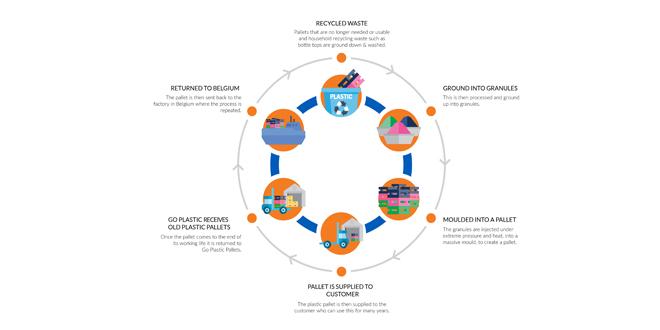Future-Ready: Preparing students for Jobs of tomorrow
the world of work is transforming at a breathtaking pace. With advancements in technology,automation,and new industries emerging,today’s students will enter a job market fundamentally different from the one we certainly know today. As educators, parents, and policymakers, it is crucial to prepare the next generation not just for existing roles but for jobs of tomorrow—many of which haven’t even been invented yet.
Why Preparing Students for the Future of Work matters
The era of digital disruption means traditional career paths are evolving rapidly. Future-ready education equips learners with the adaptability,critical thinking,and innovative mindset necesary to thrive amidst change. Industries like artificial intelligence, green technologies, and remote work platforms are already influencing workforce demands.Proper planning ensures students don’t just survive, but excel in, the future job market.
Key reasons to focus on future-ready education:
- Automation: Routine tasks are being replaced by machines, shifting demand toward uniquely human skills.
- Dynamic job roles: New industries and roles are emerging, requiring agility and continuous learning.
- Globalization: Digital dialogue enables global collaboration,making cross-cultural skills invaluable.
- Lifelong learning: In a fast-changing world, the ability to learn and relearn is more important than static knowledge.
Essential Future-ready Skills for Students
To be successful in the future workforce, students need more than memorization—they need a toolkit of versatile skills that can transfer across industries.
Top Future-Ready Skills Include:
- Critical Thinking & Problem-Solving: Ability to analyze complex situations and devise practical solutions.
- Digital Literacy: Comfort with emerging technologies, coding, data analysis, and digital platforms.
- Creativity and Innovation: Cultivating original ideas and the willingness to take calculated risks.
- Collaboration & Communication: Working effectively in diverse teams and communicating across platforms and cultures.
- Resilience & Adaptability: Staying agile and positive in the face of change and setbacks.
- Emotional Intelligence: Understanding and managing one’s own emotions as well as empathizing with others.
- Entrepreneurial Mindset: Seizing opportunities and turning ideas into action.
Classroom Strategies for Future-Ready Education
Integrating future-ready learning doesn’t require an overhaul but rather intentional shifts in teaching practices. Here are some practical strategies to foster future skills in the classroom:
Project-Based Learning (PBL)
PBL empowers students to work on real-world challenges, collaborate in teams, and learn by doing—essential for jobs of tomorrow. For example, building a prototype with 3D printing or launching a mock business can connect theory to practice.
Integrate technology Purposefully
Incorporate coding exercises, robotics kits, and digital research into the curriculum. Using platforms like Scratch or Tinkercad can spark interest in STEM careers and empower students to become digital creators.
Encourage Interdisciplinary Learning
Future challenges demand knowledge across domains. Blending science with arts, or math with social studies, helps students connect dots and innovate.
Focus on Soft skills
Intentionally teach communication, negotiation, and emotional intelligence through group discussions, role-play, and feedback sessions.
Promote Lifelong learning
Celebrate curiosity and self-driven research. Give assignments where students choose their own projects, fostering autonomy and intrinsic motivation.
Benefits of Preparing Students for Future Careers
A future-ready approach in education holds significant advantages. Beyond employability, it promotes holistic growth and personal fulfillment.
- Increased Job Readiness: Students transition into the workforce equipped to handle diverse responsibilities.
- Higher Earning Potential: In-demand skills can lead to lucrative opportunities.
- Personal Growth: Students build resilience, creativity, and confidence.
- Positive Societal Impact: Future-ready learners are more likely to drive innovation,support sustainability,and uplift communities.
Case Studies: Schools Leading the Way
1. High Tech High, California
This innovative U.S. school focuses intensely on project-based learning and interdisciplinary curricula, letting students identify and solve real community problems. their alumni report higher engagement, critical thinking abilities, and readiness for diverse careers.
2. UWC Atlantic College, Wales
Renowned for its experiential learning, this school combines the International Baccalaureate program with service-learning. Students graduate with not just academic proficiency, but ethical reasoning and leadership skills sought in jobs of tomorrow.
3. singapore’s Future Skills Program
Singapore’s government partners with industries to identify evolving workforce needs. Schools integrate digital literacy, design thinking, and entrepreneurship—ensuring students are always a step ahead.
Practical Tips for Parents and Educators
- Stay Informed: Follow trends in the future of work and evolving job markets.
- Encourage Passion Projects: Let students pursue interests that may lead to the next big idea or technology.
- Foster Digital citizenship: Teach ethical and responsible use of digital tools and social platforms.
- Promote Feedback Skills: create a classroom culture where constructive feedback is welcomed and used for growth.
- Connect with Industry: Organize field trips, internships, or guest lectures from professionals leading the future workforce.
First-Hand Experience: A Teacher’s Perspective
“I implemented a ‘mini start-up’ project in my classroom, where students brainstormed business ideas and developed prototypes. They learned not only how to code an app, but also how to pitch to investors and collaborate as a team. The experience built their confidence and showed them how future-ready skills are essential in any professional path.” – Ms. Andrea Chapman, Middle School Technology Teacher
Looking Ahead: Continuous Evolution in Education
Future-ready learning is not a one-time shift but an ongoing evolution. By continually adapting teaching methods and curricula, we can empower young minds to become lifelong learners and bold innovators—ready to take on jobs of tomorrow and shape a better world.
Conclusion
Preparing students for jobs of tomorrow is more than a trend; it is an imperative for educators, families, and society. By emphasizing critical future-ready skills, integrating hands-on learning, and embracing adaptability in education, we can ensure today’s students are equipped for whatever the future holds. Let’s inspire every learner to dream big,think creatively,and step confidently into jobs we can only imagine today.

